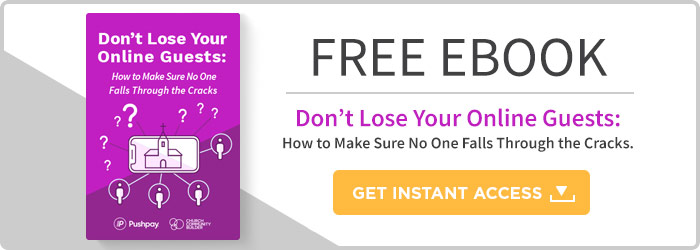5 Ways to Stay Digitally Connected Through the Summer Slump
This year, many churches may see their biggest summer slump ever. Social distancing guidelines and stay-at-home orders will likely ebb and flow, but even as recommendations change, the fear of COVID-19 will remain, and many people will choose not to attend in-person gatherings, even if that’s an option.
Churches don’t need to encourage people to take risks they aren’t comfortable with, but it will be important to help members stay connected through this season. A lot of churches have dramatically expanded their digital touchpoints with their congregations over the last couple of months, and that should continue.
LEARN MORE ABOUT LIVESTREAMING WITH RESI
Here are five of the best ways to keep your church digitally connected through the summer slump:
1. Promote digital small groups
Small groups are a vital part of discipleship and one of the best opportunities your congregation has to experience fellowship. For people who were already in small groups, Zoom and other video conferencing apps have helped them continue to find prayer, spiritual growth, and meaningful conversations that encourage and uplift them.
But for the many church members who didn’t already have a small group, in-person services were one of the only ways (if not the only way) they interacted with other church members.
This is a valuable time to not just tell your congregation that your church has digital small groups but to share exactly how and where they can get involved, what joining one is like, and why small groups are an important part of your church.
Pro tip: Want your small groups to be successful? Avoid these small group mistakes.
2. Continue sharing content throughout the week
Churches have been producing a lot more content lately. Whether your staff has been creating video devotionals, sharing articles, producing a podcast, or simply talking about what’s happening in your church community, your church has probably started to see the value of sharing content with your church throughout the week. There’s no reason why that has to stop if you’re allowed to start meeting in person again, and continuing to share content will still be a helpful way to keep your congregation engaged.
Over the last few weeks, some church members have likely seen and heard from your staff more than they had in the past few months—maybe even all of last year. And that’s simply because your team is actively going to your congregation by communicating in the digital channels they spend time on, like Facebook, Instagram, and in your church app.
3. Use your livestream chat
When your congregation streams your service live, chat is one of the few ways you can directly interact with them. Many churches have taken this time to experiment with the best ways to use live chat to help people engage with the service. This is an important channel for offering technical support, but it can also be a useful place to help people follow along and ask questions. Even if you return to in-person meetings this summer, be sure to designate a staff person to facilitate the conversation and, when appropriate, refer to the chat throughout the service.
4. Encourage digital community
Many congregations have leaned on social media to directly interact with each other during this time, whether through designated groups on Facebook or social apps designed for the church. This has created a convenient channel for people to seek prayer and support and also just to interact with their church family throughout the week.
Pro tip: Set up a few drop-in Zoom meetings that happen at the same time every week. This provides a perfect opportunity for different people to touch base and hang out with others who are available. Some of them can be specific Zoom-with-the-pastor gatherings.
5. Leverage email
If you haven’t already, this would be a great time to start a newsletter that talks about what’s been going on in your church throughout the week or a series of emails that supplement what you’ve been talking about and preaching about lately.
Email isn’t a channel where you’re likely to have a lot of direct interaction with your congregation (and you don’t want a clogged inbox anyway), but it’s an effective way to supplement your other communications and amplify the videos, posts, and information you want your church members to know about.
However you decide to use email right now, make sure you tell people what you’re doing and what they should expect if they stay on your email list. Don’t just start bombarding them with daily emails when you’ve been averaging one per quarter for the last several years.
Prepare for the “new normal”
Church is going to look different in the wake of the COVID-19 pandemic. The church has always adapted to crises, but some moments have led to lasting changes. In our free ebook, Welcome to the New Normal, we explore how the way we do church will be forever changed by this pandemic.
Featured Content
You May Also Like

